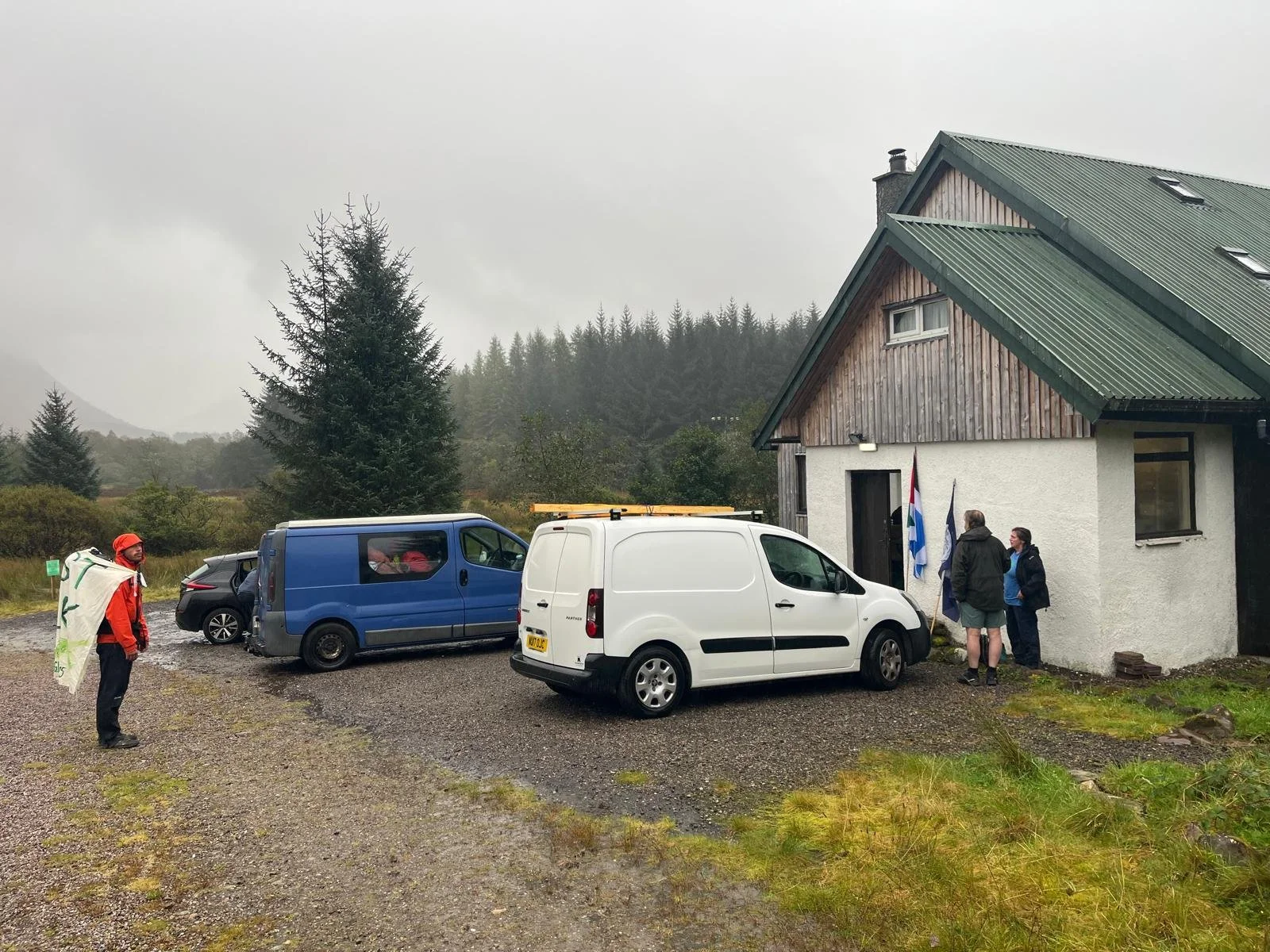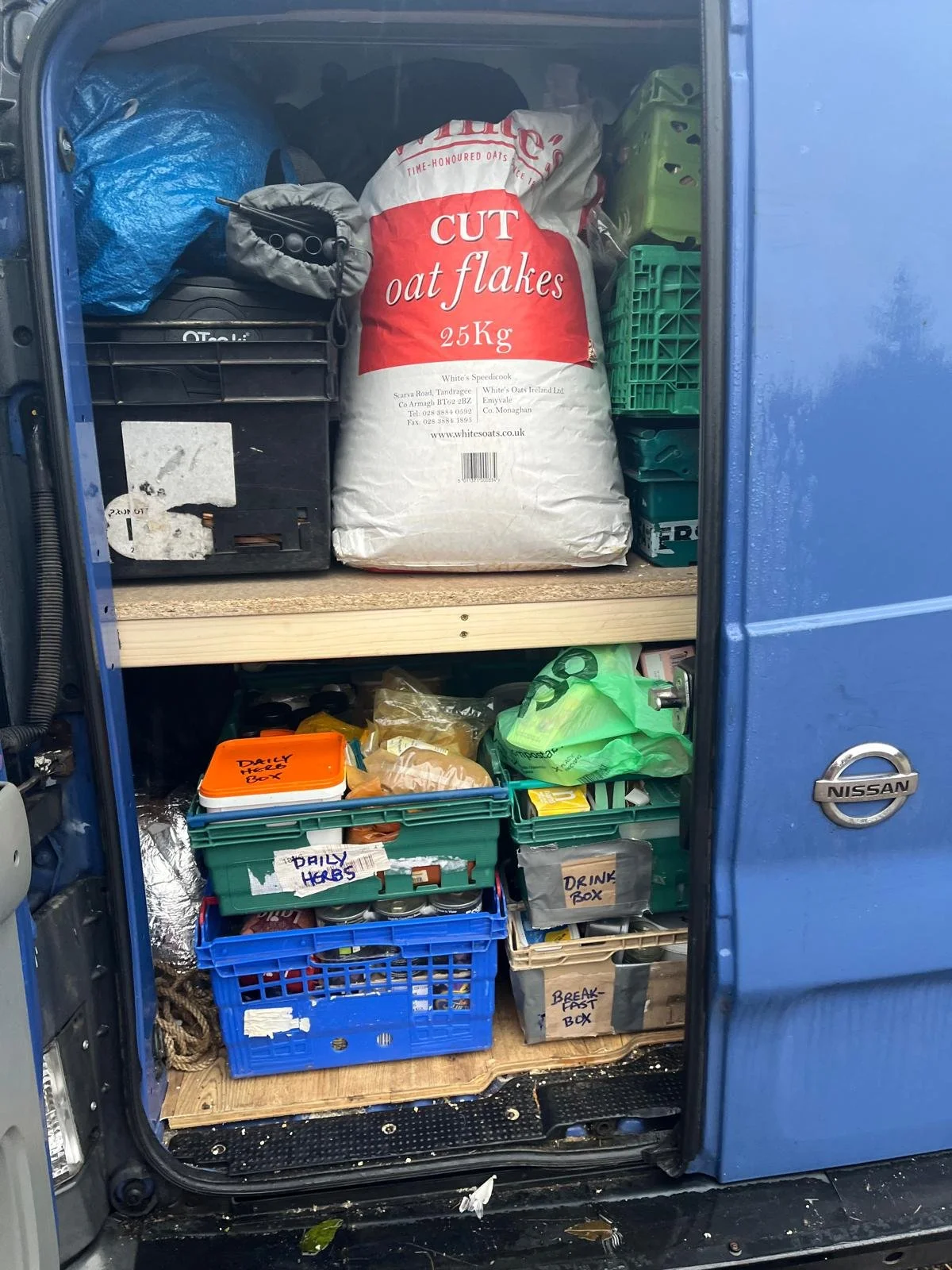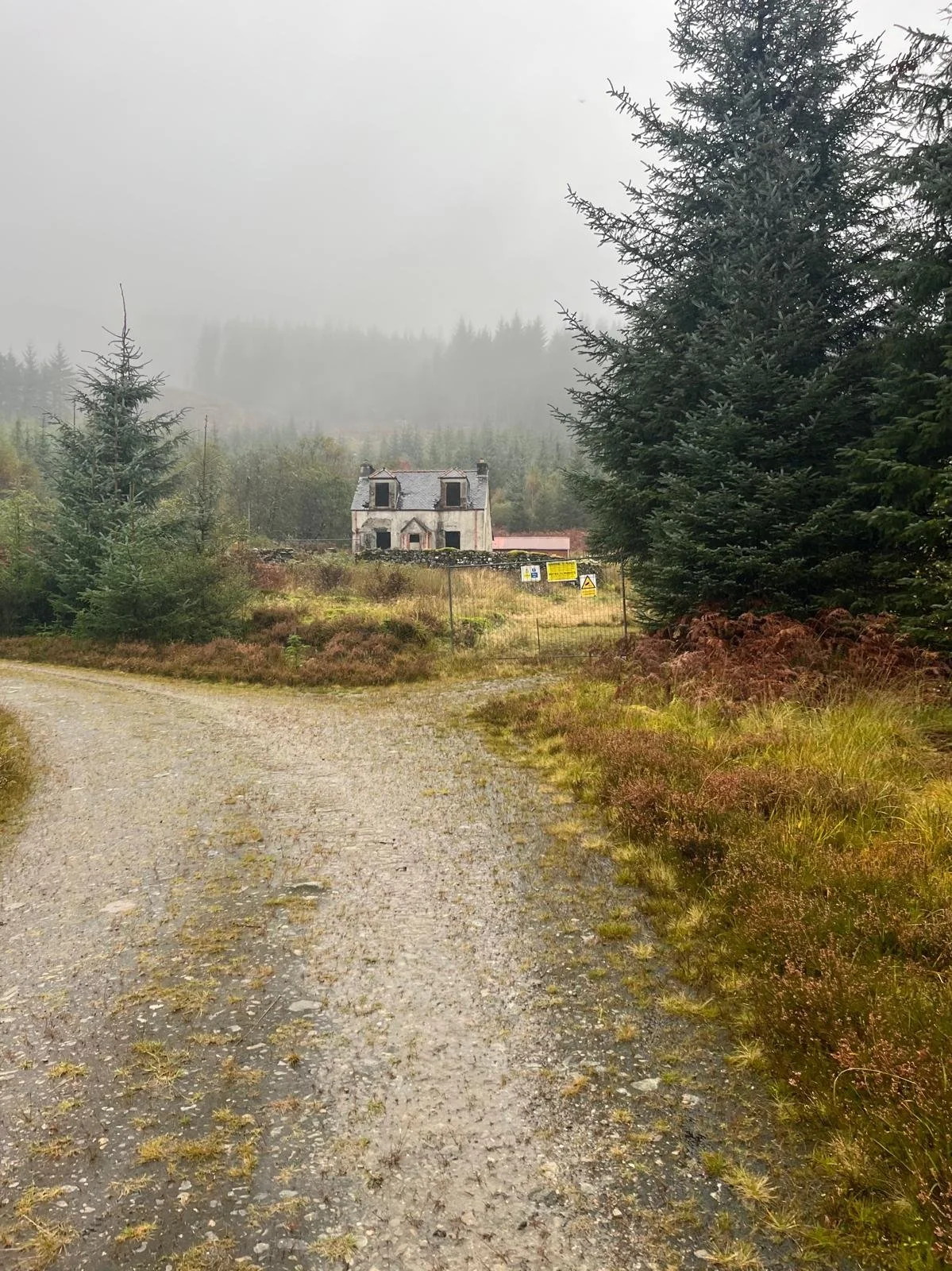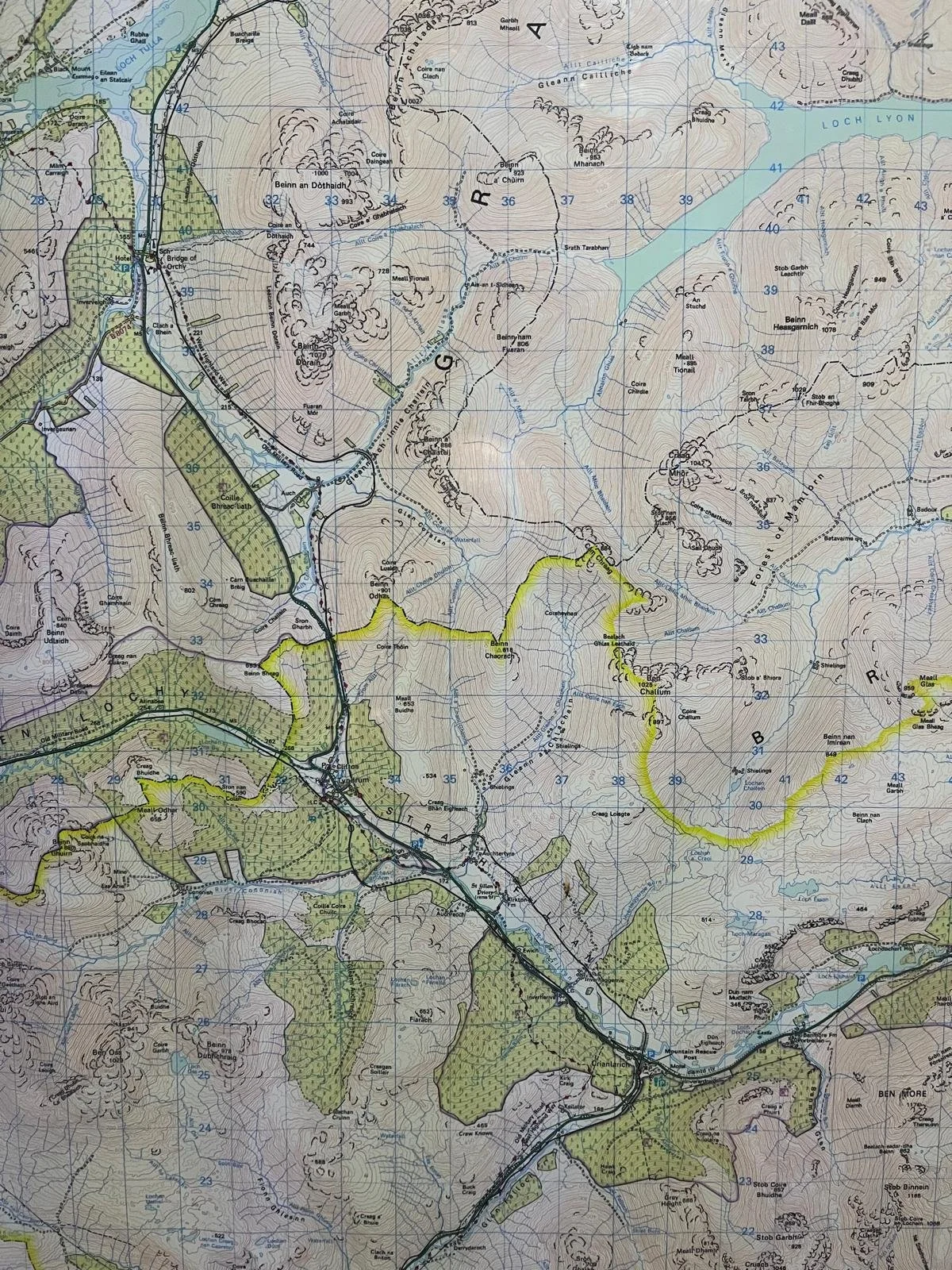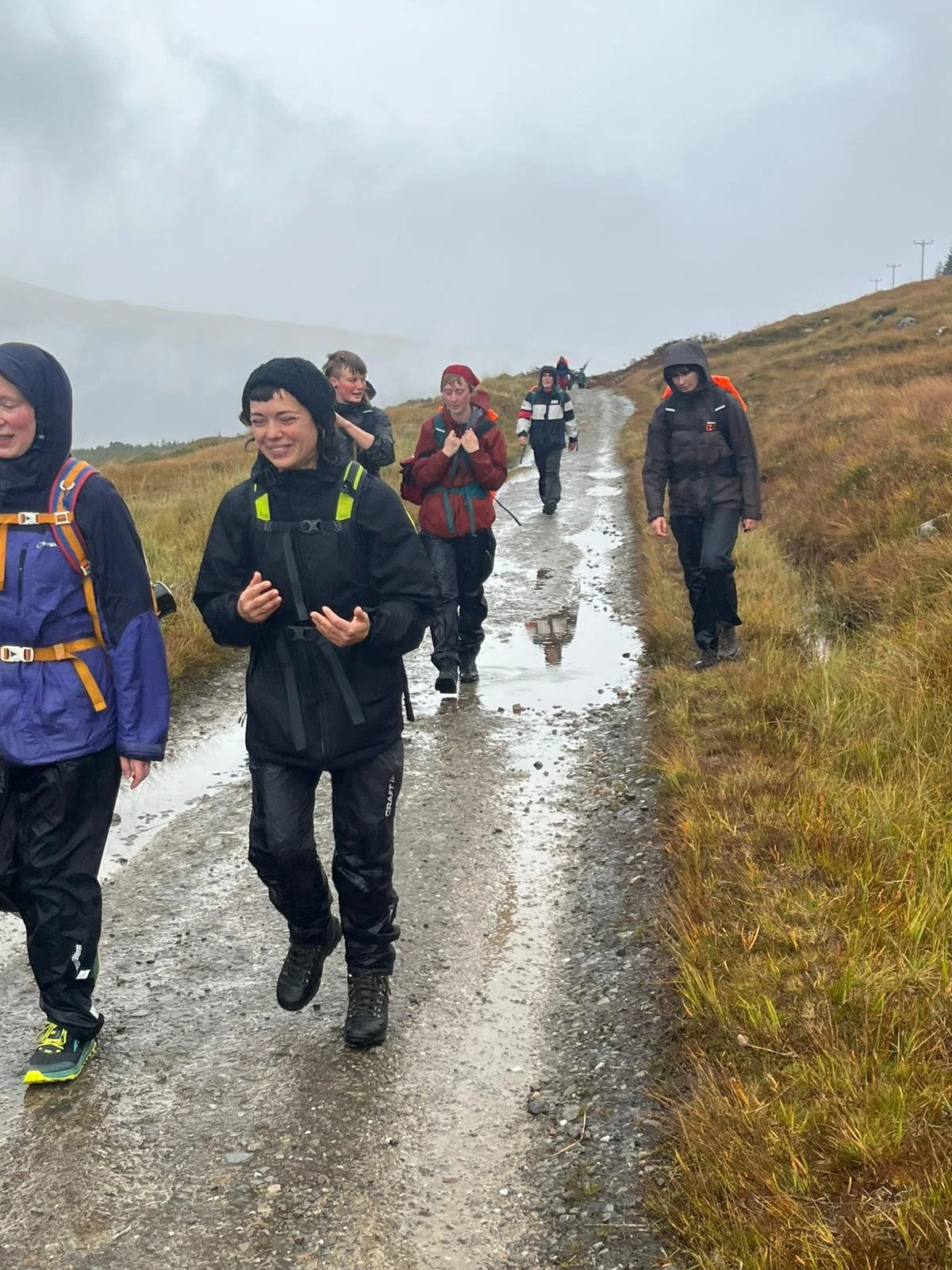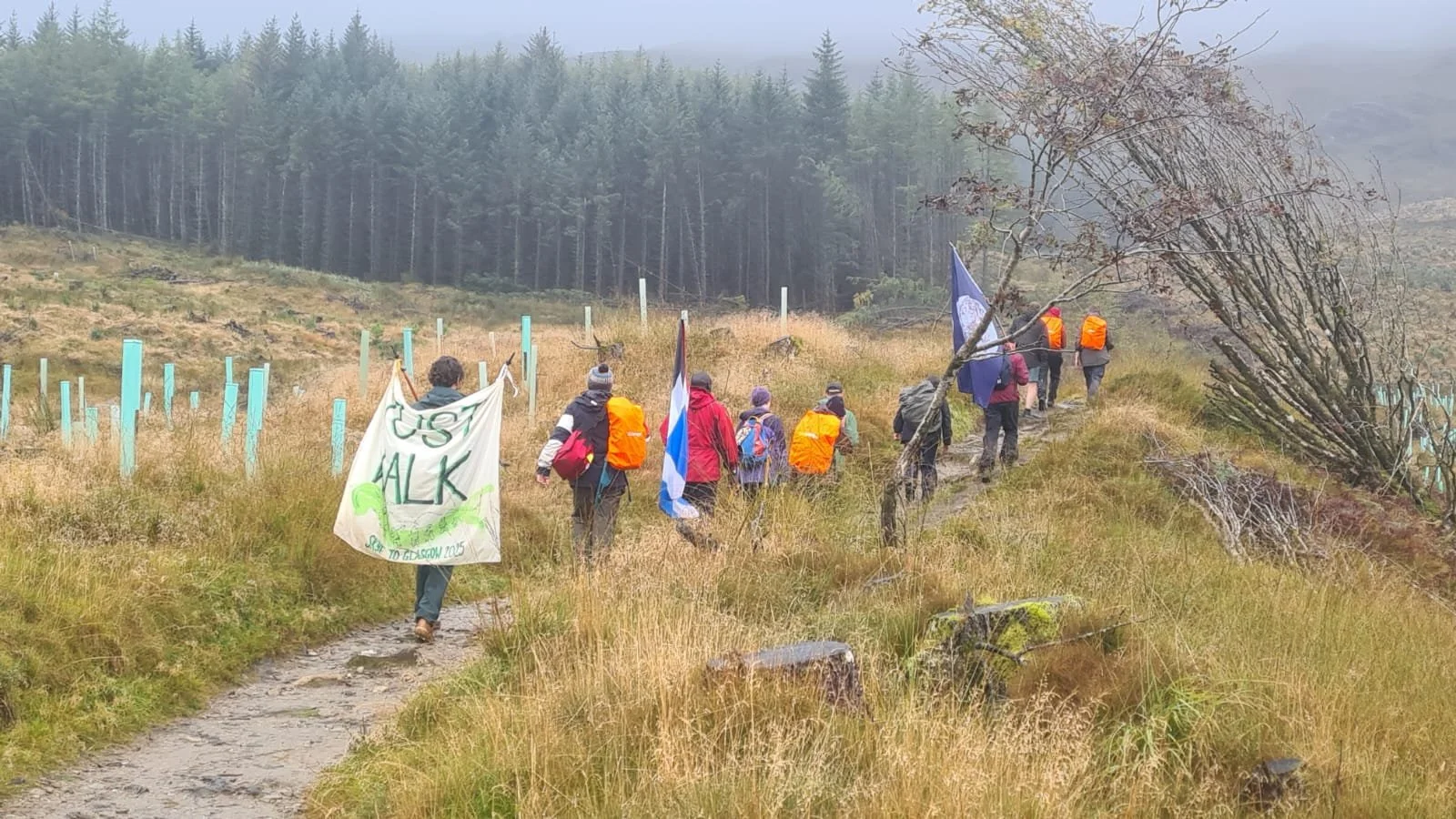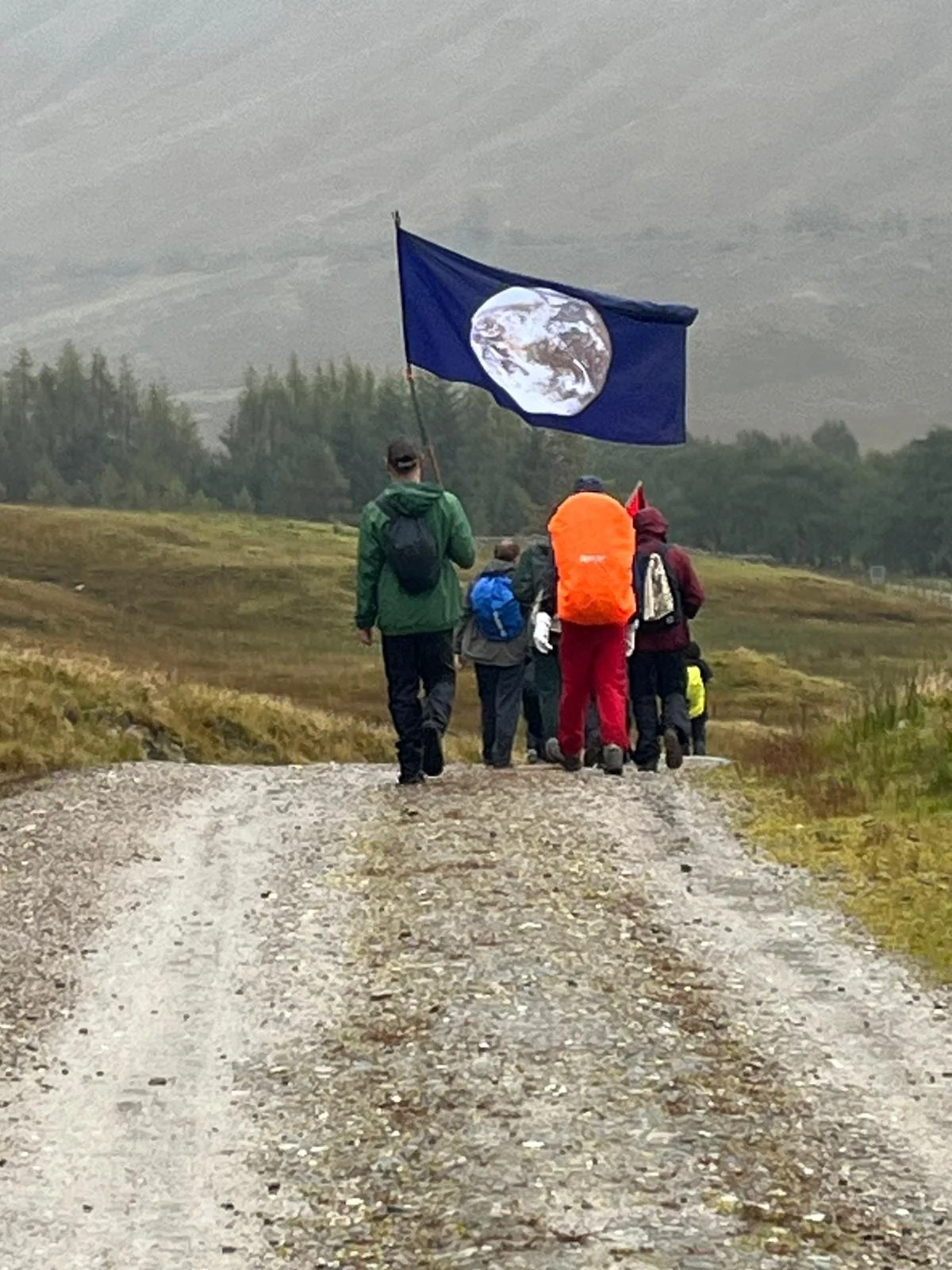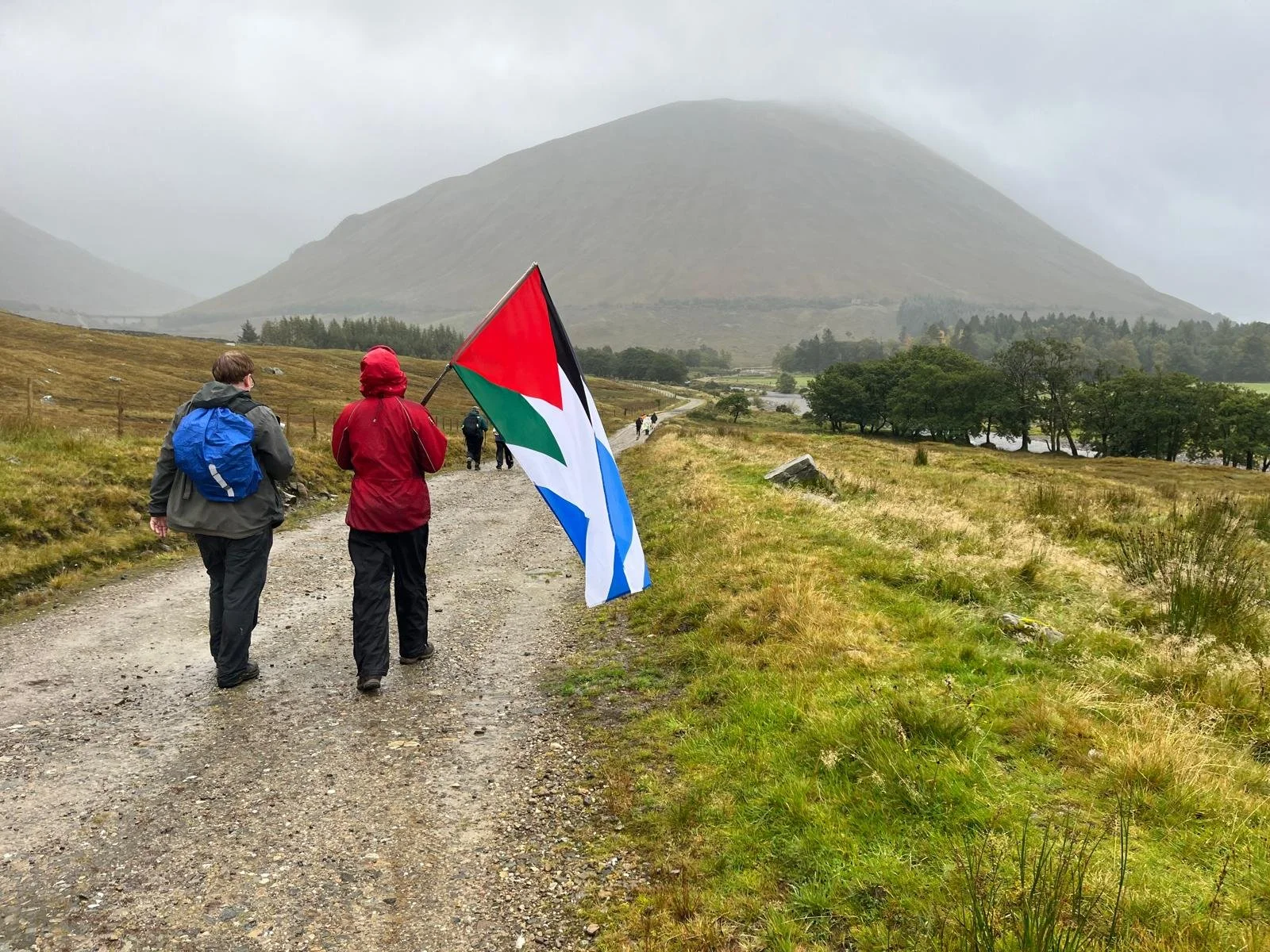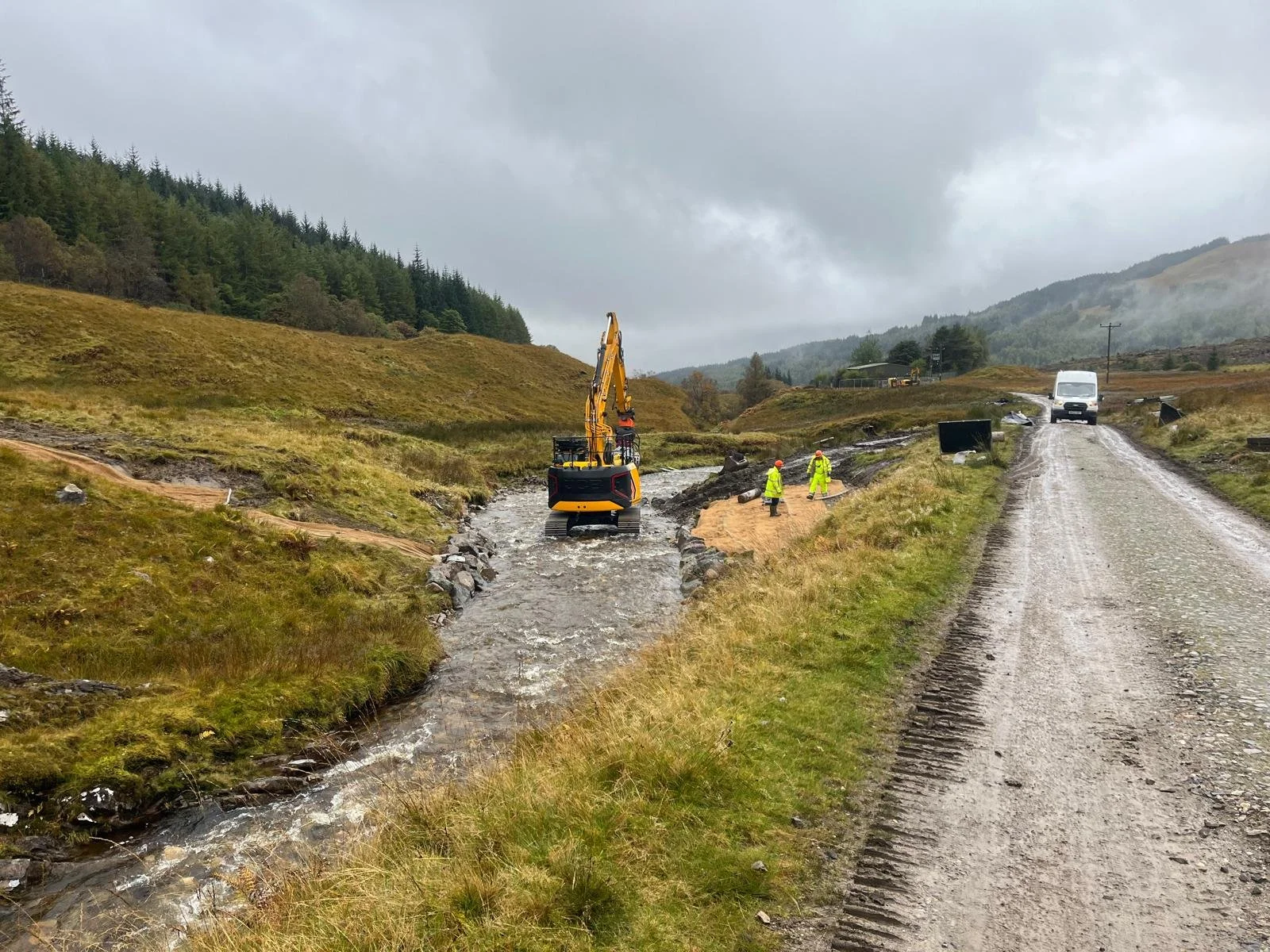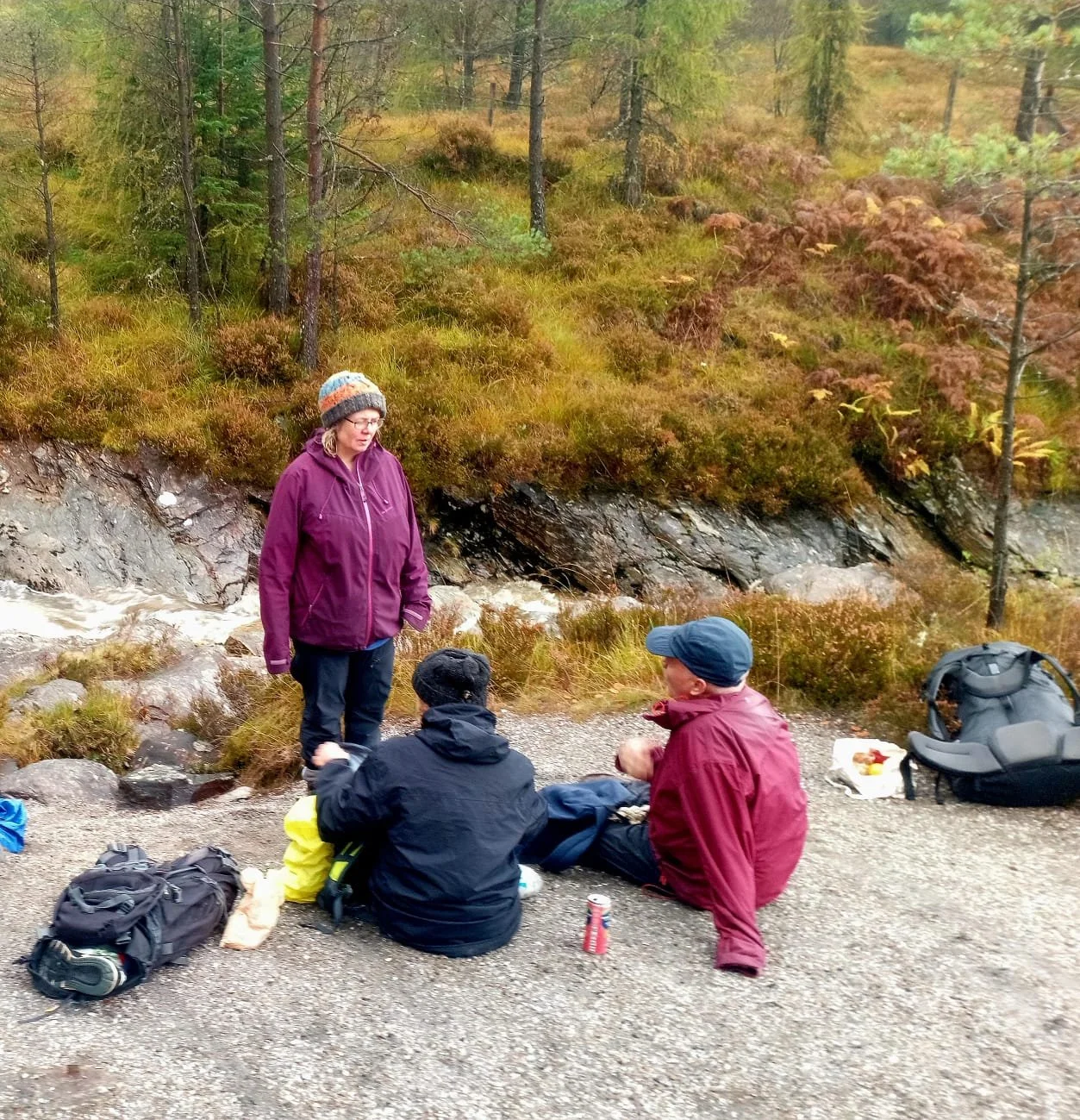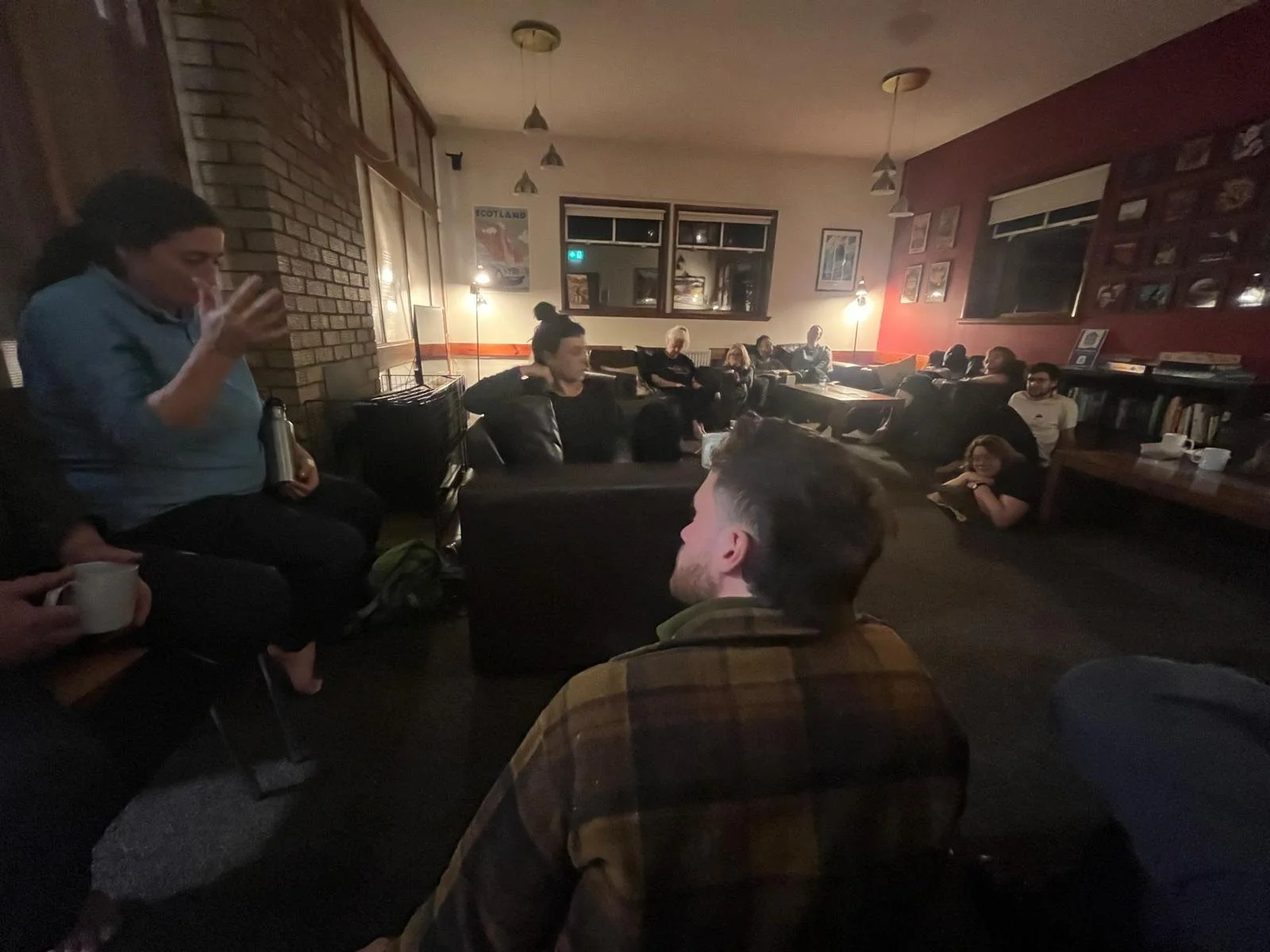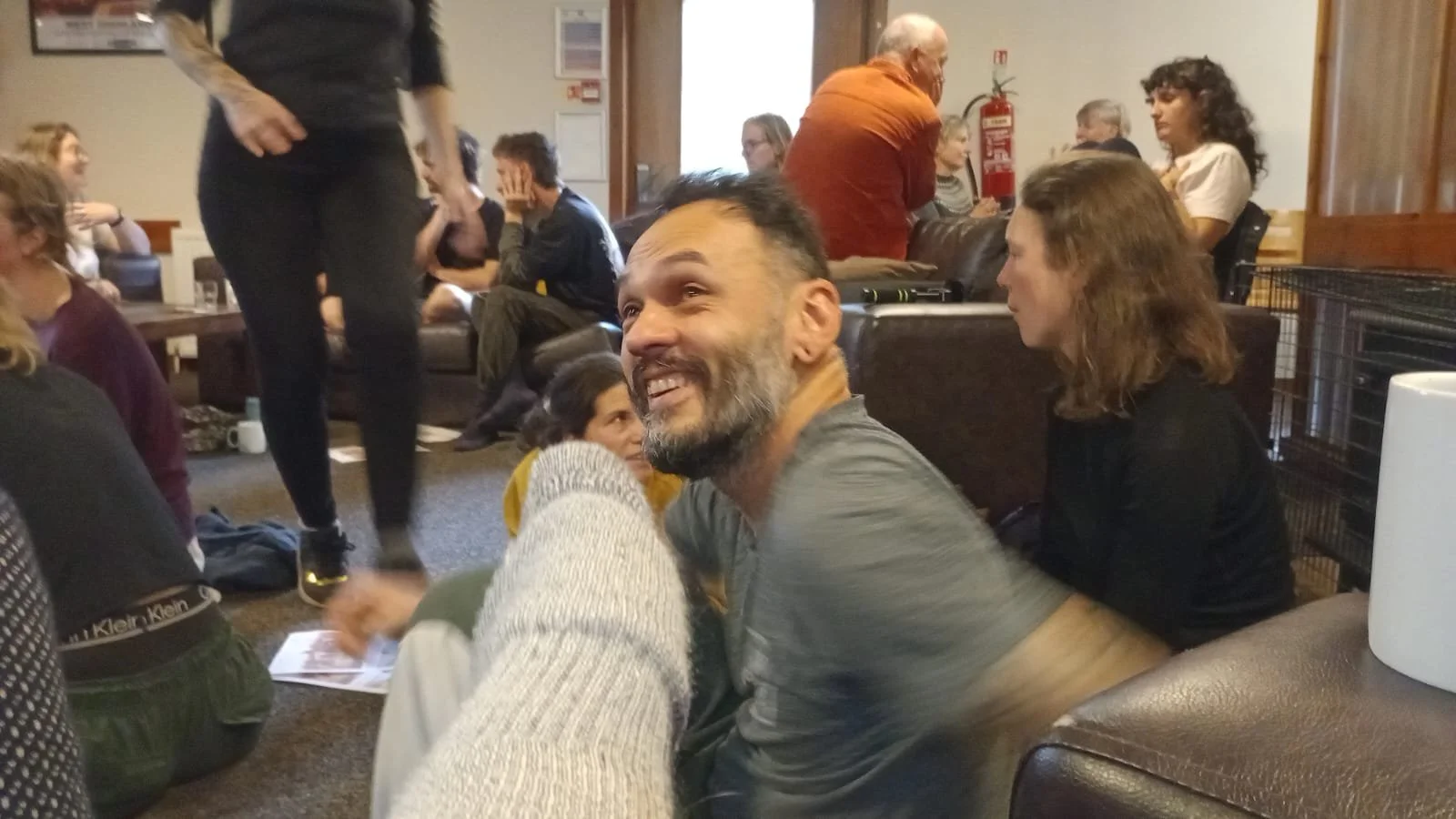Down to Crianlarich - devastation and recovery
Day 15 - Bridge of Orchy to Crianlarich (13 miles)
We meet to heaar abiut the route from Ben, finish packing the vans, and have a look at what seems to be a haunted house nearby.
We leave the lodge, head north briefly, then cross the bridge, the road and the railway track to then head south towards Tyndrum and Crianlarich.
Some of the route is full of moor and well.
However, much of the land feels devastated. The monoculture of industrial forestry (aka Thatcher’s tax breaks for the rich) cuts the land into rectangles of monotonous blocks of trees, marching in line, into cleared grey areas of brutal clearfelling.
I message Andy Wightrman (of ‘Who owns Scotland?’) to ask him who owns the Auch Estate we are passing through. He replies: “Profound UK Holdings Ltd controlled by Mr Ming Wai Lau”
The West Highland Way is well maintained for all the walkers, but harder on the feet than the bogs and less used paths we were following before we joined it.
As we rise to the pass before dropping to Tyndrum: the railway, road and river all jam in together. There are diggers in the river, vehicles on the path, concrete mixers by the road, all seeming to be working on the wagter supply for Tyndrum. Dropping down into Tyndrum some of us get phased into venerating our inner capitalist as we buy crisps and coffee and other things we don’t need. We made and packed our sandwiches tis morning, and are carrying clean clean water.
A little beyond Tyndrum we stop for lunch on the gravel pit of a supposedly reopened gold mine where you are free to search, but anything you find must be given to the Queen (presumably by entering the afterlife).
By the end of the day some of us feel way more tired than we are used to, and wonder whether that is because of how much time we have spent not only walking, but collectively reflecting on the land justice questions we have each dreamt up, and then discussed with each other as we walk.
There are questions about global land justice and about land justice in the context of climate change and migration, with Kipchumba pointing out that so much forced migration is the result of people bekin gforced from their lands elsewhere.
There is Skye’s answer to the question of “What is land justice?”, which is that it means justice for the land, including for humans as part of the land. A wonderful de-centring of humans that is also a reintegration of us into the ecosystem that we are made from and return to.
There is my long question that Poppy had the misadventure to pick up, which is something like: “How do we stop giving away our power to this domination system and instead reclaim it?” I have a suggestion on that which involves giving up on our addiction to giving our power away to politicians who we hope may make thing better. It is an addiction that alllows us to abdicate our responsibility, and then blame politicians (who are powerlessly caught in reproducing the system) as if itis ther fault rather than our responsibility.
At one point, Poppy, Kipchumba and I unexpectedly encounter a landowner.
Every time I tell folk that we meet that we are walking for land justice, we receive solid support.
This time we meet a much older man beside his 4 by 4 vehicle up in the hills. I tell him we are walking for land justice, for the land to come back to the people, and - for the first time in saying this - I add “but you might disagree”.
He replies that he does disagree.
Thinking he may own a small patch of land, I say we’re talking about landowners who own 50,000 acres and who stop communities from developing what they need.
He says “I only own 4,000 acres”, and i reply thay “I’m sure you support your community and enable folk to develop as they need”, adopting a strongly welcoming stance that suggests that “of course you’ll agree with us, and you know we’ve already won, and you’ll want to give up your land and come over to the side you need to be on”. That was my tone not my words, and I’m aware it is enabled by a privileged structural positkn where I’m effectively seeming to say “look I’m just like you but I’ve chosen this path and I’m sure you will too”. I insist on a handshake as we leave, and he is wiling to oblige.
Afterwards Poppy points out that he was holding an elaborate white bone handled walking stick.
While we were walking, the day’s support gang of Gabs, Wapat, David and Eva have been gathering supermarket trolly loads of supplies to feed us all at our two night stop over at Crianlarich YHA.
We arrive at the Hostel and in the evening we have four talks:
from Wapat on how we need to do the work of ensuring the resources of the land are there for future generations, andf on how for his people the opposite of poverty isn’t wealth, it is dignity and unity;
from Kipchumba on the Sengwer - his peoples - struggle in Kenya where their homes are burnt every two years or so by Kenya Forest Service that is as intent on burning them out of their ancestral lands as the Sengwer are on remaining;
from David and then Annie on Glasgow, with David’s talk drawing on his nradical Glasgow tours, telloing of Mary Barbour, and how the Irish land league inspired the Scottish land league; and then Annie on how the Irish famine was the Empire’s deliberate starving to death of a million people (who had to walk to food relief, and were made to work while already starving), as well as thee fact that this forced 2 million to emigrate, including on the ‘coffin ships’ to America; and
from Norah and Bob on the struggle that led to the successful community buy out on Eigg that restored the island to community ownership, and has led to a vibrant place that knows how to party, has its own independent renewable electricty grid and independent brewery and is a place youth return to.

